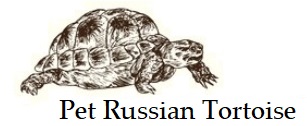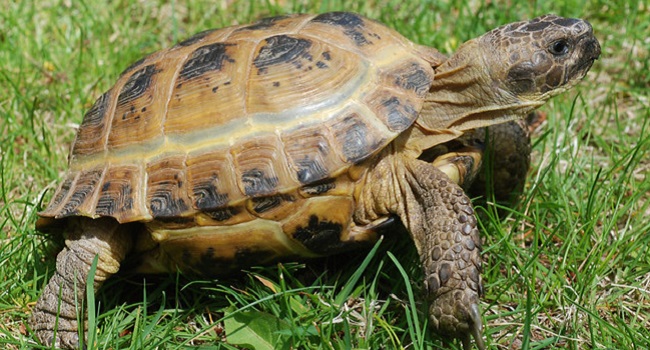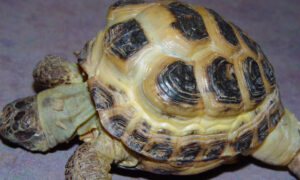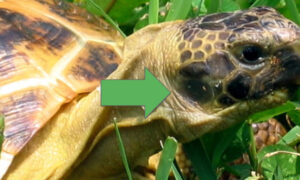The carapace and plastron protects the majority of the tortoise’s body. However, it leaves the legs, neck and head vulnerable to injury and skin problems. There are several factors that will vary the risk to tortoise skin problems. Housing multiple tortoises in an enclosure. Enclosure decor and design. Outdoor enclosure environment. Overall tortoise health. Depending on the concern, you may notice some skin concerns more often than others. It is important to be aware of the common tortoise skin problems so that you can keep your Russian tortoise healthy.
Tortoise Has Dry Flaky Skin
Dry skin is fairly common when your Russian tortoise is shedding. This isn’t necessarily a tortoise skin problem, but it’s something you may notice from time to time. Soak your Russian tortoise in warm water to help loosen the skin so that it naturally peels. Do not peel the skin off, as this can hurt your tortoise.
Tortoise Missing Scales
It’s not uncommon for outdoor Russian tortoises to lose a large scale or two on their legs. Russian tortoises clime, dig and can find themselves in trouble with predators. If you notice bleeding, use a warm paper towel or cloth to stop the bleeding. Keep the area clean to prevent infection. Seek veterinary help if the area does not heal and begins to swell.
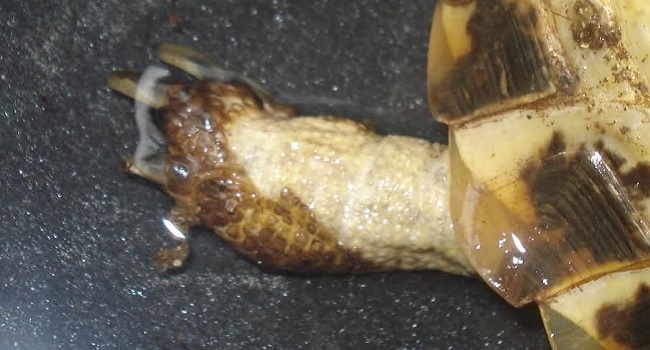
Superficial Skin Abrasions
Like missing scales, your Russian tortoise can scrape his legs or head on objects in the enclosure. If you are housing multiple tortoises in one enclosure, it’s also not uncommon that they will fight. Bites from one tortoise to another can also cause skin abrasions and minor wounds. Keep the wounds clean to avoid infection, and just like missing scales, if the area does not heal or you begin to notice an abscess forming, seek veterinary care.
Myiasis in Tortoises
Fly strike, or Myiasis, occurs when flies lay eggs in poop. In most cases they’ll choose poop on the ground, but if your tortoise has runny stool or leftover poop on the skin around the tail, flies can lay eggs there too. When the eggs hatch, the maggots will bore into the skin of the tortoise and release deadly toxins that are carried through the blood. This condition is called Fly Strike. If you do not notice the maggots early enough, it can be fatal.
Ticks on Russian Tortoise
Tortoises may not get fleas, like your dog or cat, but tortoises can get ticks. Ticks will cluster around areas where the skin is the thinnest, like the joints of legs and along the shell line. A secondary infection from the tick bite can occur. Luckily, ticks do not suck enough blood for it to be debilitating for your tortoise. And, it’s unknown as to whether ticks can transmit diseases to tortoises.
To remove ticks from tortoise, cover the tick with Vaseline. This will suffocate the tick and it will unlatch from your tortoise. You can then pick it off. Do not try to burn off the tick or use tweezers. You do not want to pull off the body, leaving the head inside your tortoise. This can cause infection.
Abscesses in Tortoises
Slight injury can become infected if bacteria penetrates into the skin. You may notice swelling near the area. These abscesses can occur anywhere on the body, but they’re most common around the head and ears. Although tortoises do not have external ears, there is an opening behind the eye on each side of the head. Swelling in this area is a definite sign of auditory abscess.
As with any abscess, there is a risk that the bacteria will enter the blood stream, which can cause septicemia. Septicemia can become fatal if not treated quickly.
